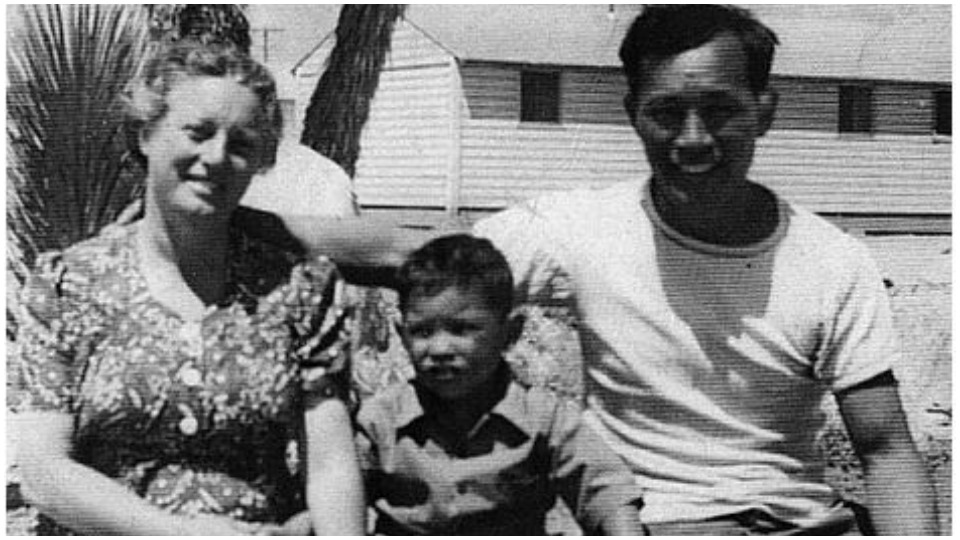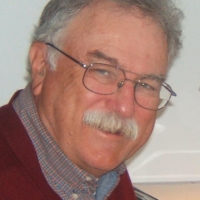
In October 1987, I covered a rally in Washington, D.C., for the People’s Daily World celebrating the federal government’s apology for the mass incarceration of Japanese Americans during World War II. The event, which drew hundreds to the U.S. Capitol steps, was sponsored by the Japanese American Citizens League. Among those who flew into town for the event were Karl Yoneda and Elaine Black Yoneda.

I interviewed Karl and Elaine, who had been imprisoned with their son, Tommy, at Manzanar, a concentration camp for Japanese citizens operated by the U.S. government in the desert 200 miles northeast of Los Angeles.
I invited them to visit me in Baltimore and speak to a gathering of 30 family, neighbors, friends, and comrades that my wife Joyce and I packed into our living room. I will never forget the shock on the faces of our mostly African-American neighbors who live with racism every day to hear Karl and Elaine tell the story of their incarceration, the vicious racism they endured.
Karl was born Goso Yoneda in California in 1906 but had moved back to Hiroshima for twelve years, graduating from high school there, and then returned to the U.S. as a young man. Elaine was born in New York City the same year as Goso and moved to Los Angeles, where she joined the Communist Party USA, in 1931. Around the same time, Goso also discovered the party and the L.A. Japanese Workers Association. He adopted the first name “Karl” in honor of Karl Marx.

Elaine told us she met Karl in 1933 when the L.A. Unemployed Council staged a mass demonstration demanding relief for workers who lost their jobs during the Great Depression.
Elaine was at that time a fulltime organizer for the International Labor Defense (ILD), married with a child, and so filled with passion for workers’ rights she was known as the “Red Angel.”
ILD was on high alert because they had caught wind that a police attack was planned on the demonstrators. Karl, who was an ILD activist, joined the rally holding his sign, “Our Children Need Food.”
When the rally began, the police attacked, clubbing viciously, arresting en masse, hauling the protesters to jails throughout L.A. For the rest of the day, Elaine and her ILD comrades were on the phones tracking down the jailed workers, racing to bail them out. As night fell, one worker was missing—Karl Yoneda. The phone rang. It was William Hynes, chief of the infamous LAPD “Red Squad.” He told Elaine, “You can pick up the dying Jap.”
When Elaine and her ILD comrades arrived at the Georgia Street prison hospital, Karl was brought out, his face caked with dried blood and his eyes swollen shut from the merciless beating inflicted on him. Elaine said her heart contracted with pity, this handsome Asian man standing before her, bloody but unbowed.

A few years later, she was divorced, a single mother. Connecting again, she and Karl fell in love. They had to travel to Washington state to get married, though, because California’s racist laws forbade marriage between Asians and Caucasians. They struggled to find a landlord who would rent to a mixed couple and lived on their meager, sometimes nonexistent organizer’s pay.
Karl supplemented their income with a twenty cents per hour job as a dishwasher at a Bay Area Yacht Club. They were active supporters of the 1934 San Francisco General Strike and in 1936, Karl became the first Japanese American enrolled as a member of the International Longshoremen’s and Warehousemen’s Union (ILWU). By now, they were also both members of the Communist Party USA.
Later, still organizing, Elaine gave birth to their son, Tommy. World War II erupted and President Roosevelt signed Executive Order 9066 that all persons of Japanese descent were to be incarcerated on suspicion of disloyalty. The CPUSA bowed to the hysteria and expelled Karl, Elaine, and all others of Japanese descent and their spouses. Karl and Elaine had been among the most dedicated, stalwart party members for over ten years. They eventually re-joined after the war when the CP reversed the expulsions. The party later apologized to the Japanese-American people for this grave racist error.
In 1942, though, with their arrest and incarceration imminent, Karl and Elaine made emergency preparations. Elaine took Tommy and went to live with her parents in L.A. where her daughter, Joyce, was living. Like many other Japanese Americans, after the Pearl Harbor attack, Karl was struggling to prove his loyalty to the U.S. He volunteered to help complete construction of the Manzanar “relocation center.”
When the trainload of detainees arrived at the site, it was less than half built—no windows, doors, inside walls, wiring, or plumbing. The only water faucet in the yard froze during the frigid nights. The latrines outside had no walls or doors. Building supplies were so scant they had to organize a committee that went to the U.S. Army detail assigned to guard them to demand delivery of supplies to make the barracks livable.
Fanatical supporters of Emperor Hirohito actively sabotaged these efforts, threatening violence, even death, to Yoneda and other inmates steadfast in their loyalty to the U.S.
A bus arrived a few weeks later, and Elaine and Tommy were among the passengers. Karl was overjoyed to see them but also angry and perplexed since the plan had been for them to stay with her parents. Elaine explained that federal agents had come to take Tommy from her, leaving her behind. She informed them she would not surrender her child, that if Tommy was going to be Manzanar, she would go with him.
She told us, “It was so ironic. Only a few weeks earlier, I had been delivering soapbox speeches denouncing Nazi Germany for imprisoning Jews in Dachau. Here I was, a month later, demanding that I, a Jewish woman, be placed in a concentration camp.” As far as is known, Elaine Black Yoneda was the only person of non-Japanese ancestry imprisoned in the Japanese Relocation program.
The inmates in the camps sent petitions to Roosevelt, demanding the right to serve in the U.S. Armed Forces in the war against the Axis powers. Finally, a recruiter arrived from the U.S. Military Intelligence Service. Volunteers would be accepted who were fluent in Japanese. Karl was among 14 accepted, trained, and deployed—a stunning transformation from an “enemy alien” to a U.S. Army intelligence officer.

He was assigned to Burma. Fluent in Japanese, his task was to compose leaflets and edit a newsletter filled with news of the war that was to be dropped behind enemy lines. He participated in the Battle of Myitkyina on May 17, 1944. Before the battle began, the two armies were in a stalemate for weeks. His assignment was to talk over a loudspeaker, appealing to the Japanese soldiers to surrender.
The battle erupted with hundreds killed on both sides. He was ordered to inspect the Japanese bodies for documents. In the tunic of one Japanese soldier, he found a packet of postcards with pictures drawn by a child. One card was inscribed with a child’s message, “Daddy, come home safe.”
Karl writes that the message “touched me because I too carried drawings from my child with a similar message in my pocket. I decided to keep these cards….I planned to send them to little Keiko in Japan after the war.”
In 1960, fifteen years after the war’s end, he and Elaine flew to Japan to attend the Sixth World Conference Against Atomic and Hydrogen Bombs. They were reunited with Karl’s mother, a resident of Hiroshima, who had survived the U.S. atom bomb attack of Aug. 6, 1945. The Japanese civilians of Hiroshima and Nagasaki (bombed on Aug. 9, 1945) are the only people in the world to have been victims of an atomic bomb attack. And the United States of America is the only country in the world to have used this weapon of mass destruction. Approximately 300,000 people died as a result of those deadly August days.
Karl and Elaine went to the address on the postcards he had retrieved from the fallen Japanese soldier in Burma. He knocked on the door. A young woman answered. “I’m looking for Keiko Akiba,” Karl said.
“I am Keiko Akiba,” she replied.
Karl handed her the packet of postcards. “I thought you might like to have these,” he said.
They became lifelong friends.
Elaine died in 1988, one day after attending a Longshoreman’s union rally for the presidential campaign of Jesse Jackson and on the 55th anniversary of her marriage to Karl. He followed after her 11 years later, passing away in 1999.
Karl G. Yoneda’s autobiography, Ganbatte: Sixty-Year Struggle of a Kibei Worker, was published in 1986 by the Asian American Studies Center at UCLA.
Red Angel: The Life and times of Elaine Black Yoneda, 1906-1988, by Vivian McGuckin Raineri, was published by International Publishers in 1991.










